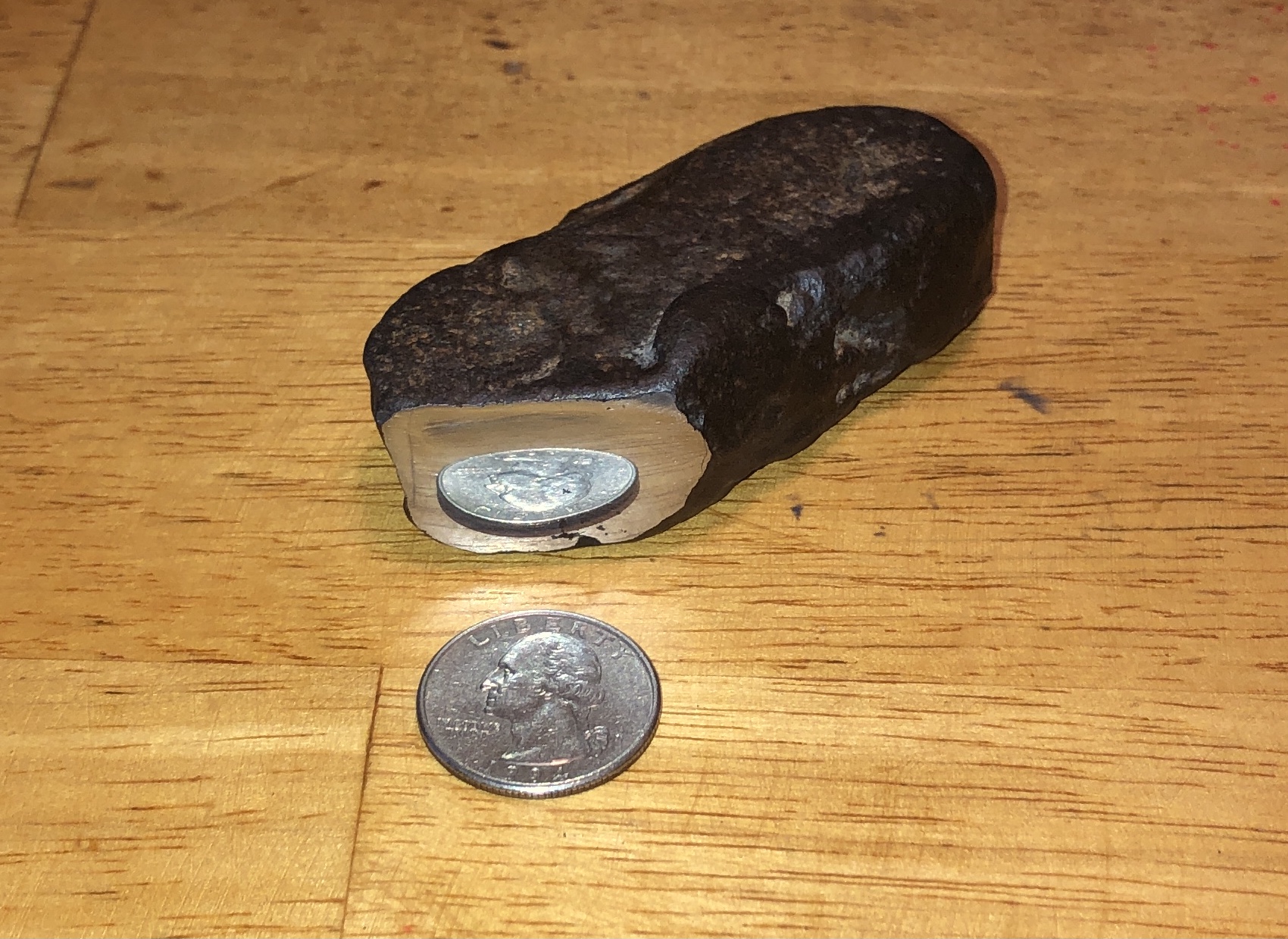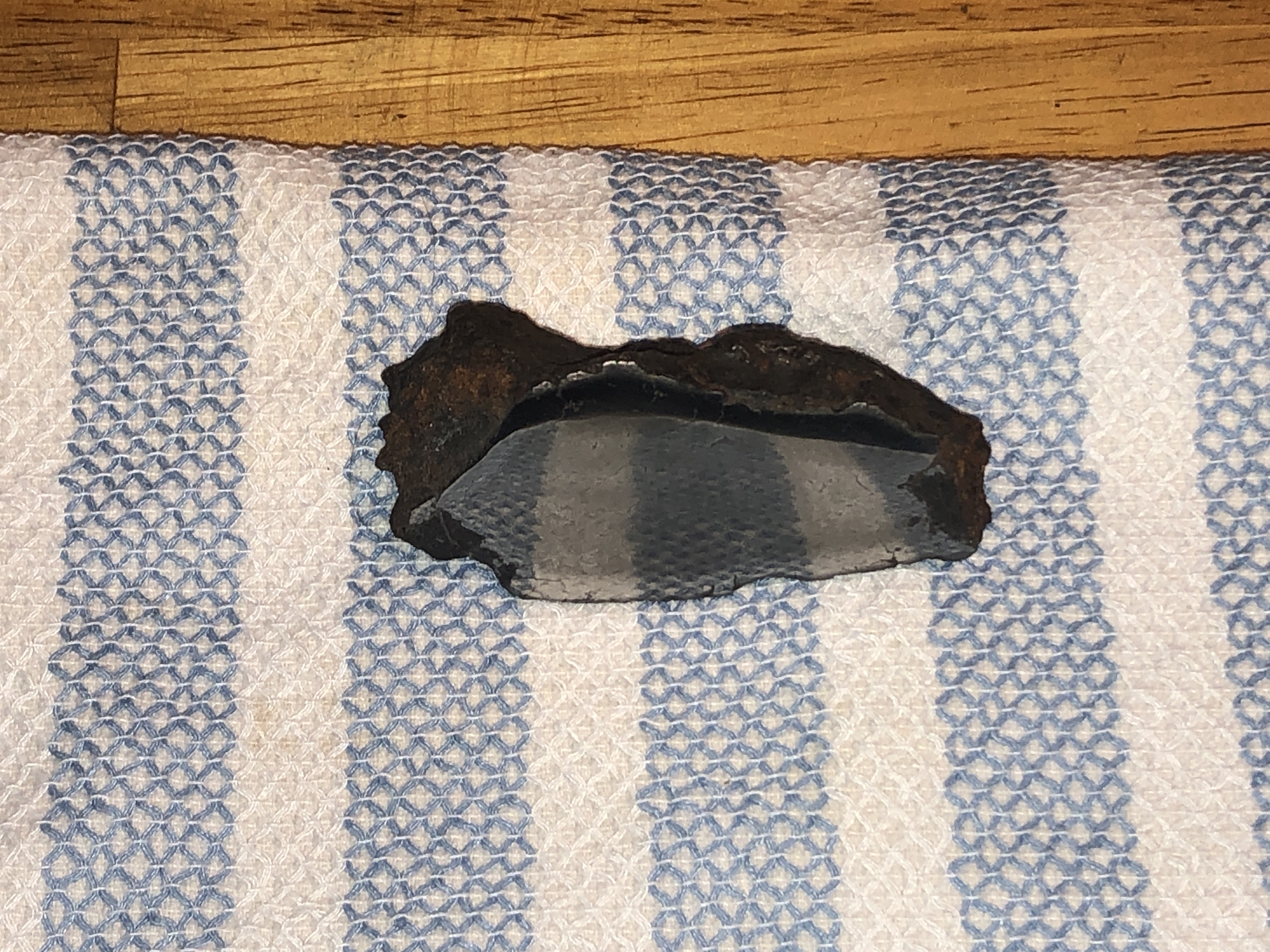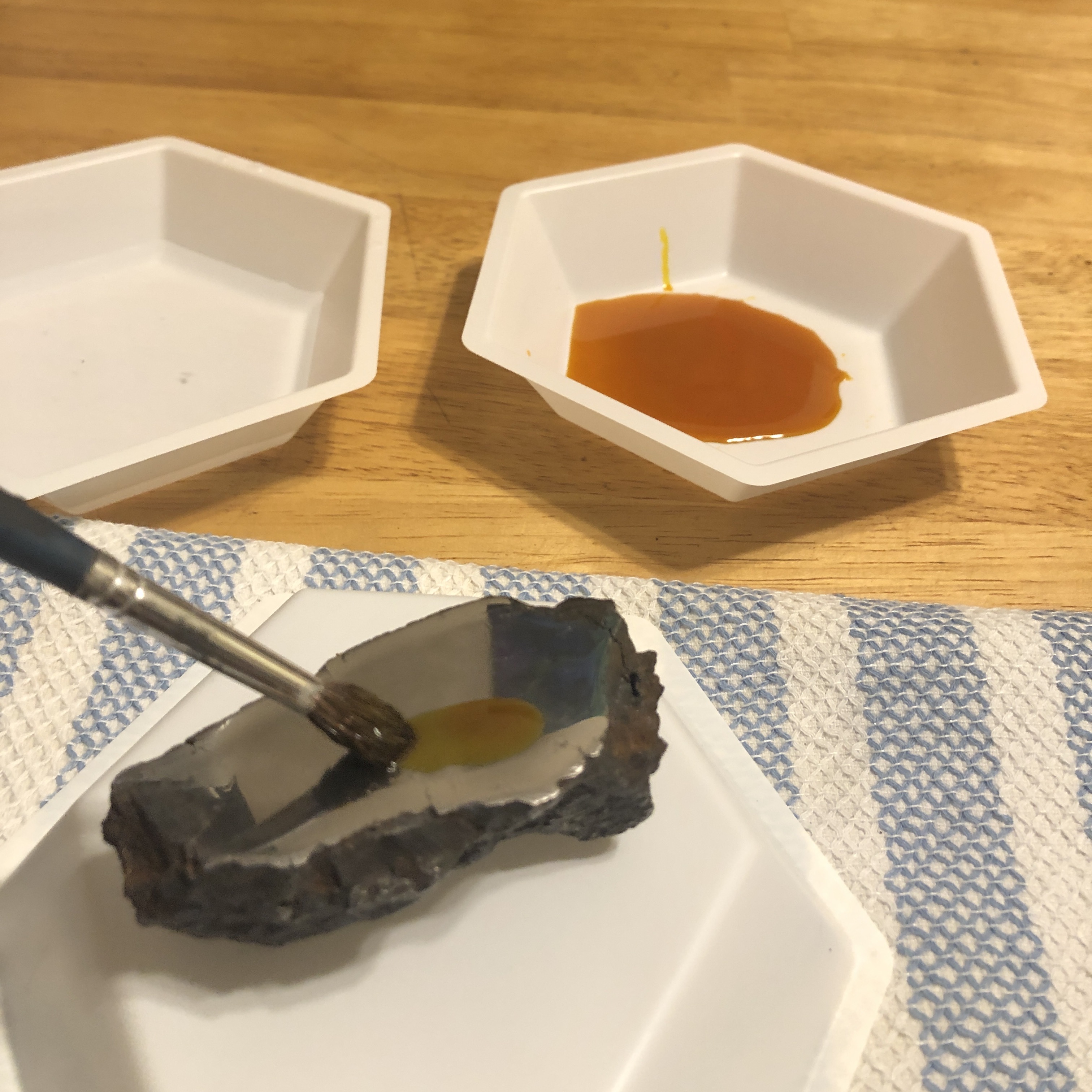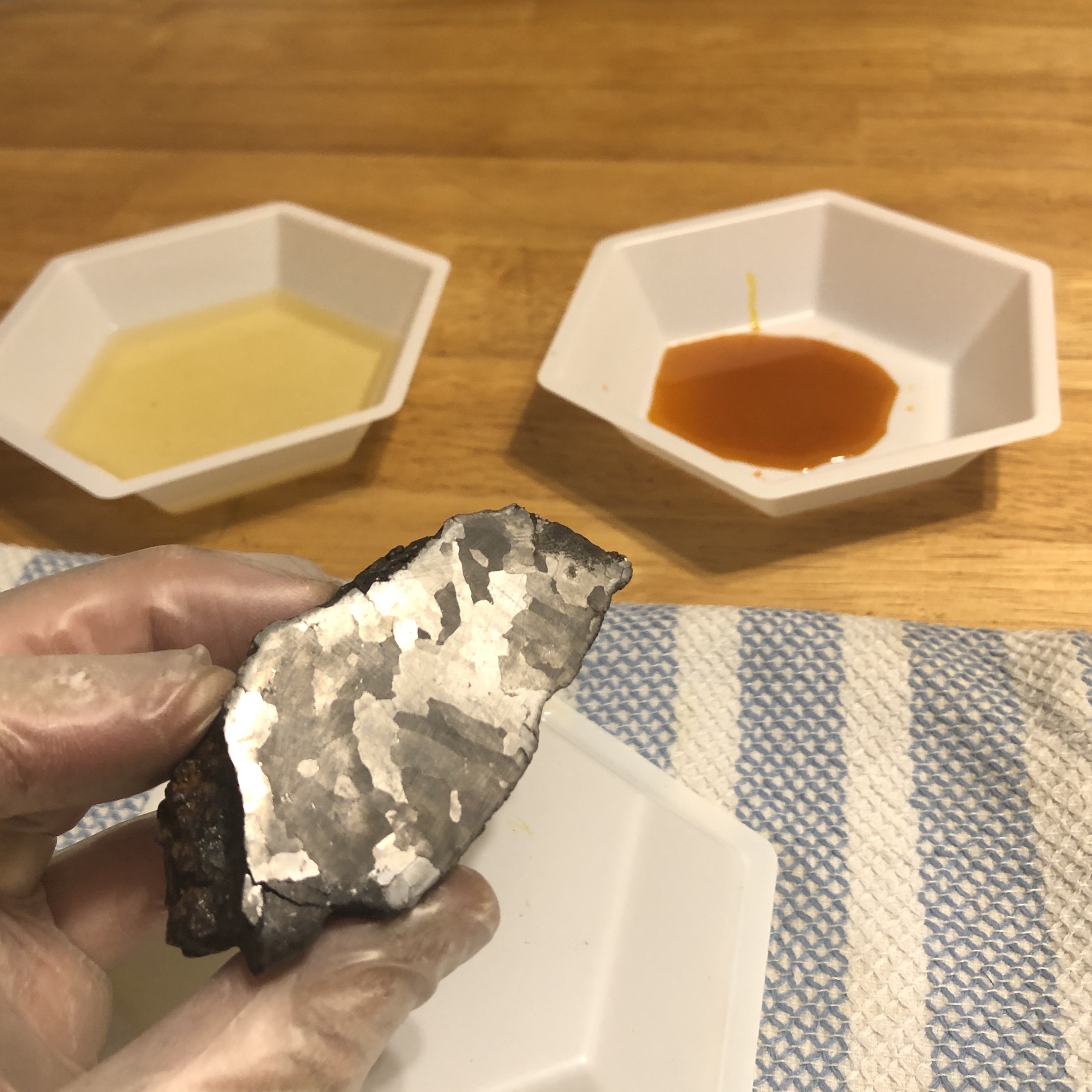Michael has worked at universities and science museums since he was in college. Since he is an expert in astronomy and has a personal collection of meteorites, occasionally people come to him asking if they have found a meteorite. In the last several decades, he has examined about twenty of these specimens and only one was found to be a true meteorite and that was purchased as such and the buyer was just looking for verification.
There are many places on the internet that can help you identify if you have a meteorite or a “meteor-wrong.” I am sorry to be the bearer of bad news, the crusher of meteorite hunter dreams, but any random rock you find on the side of the road is unlikely to be a meteorite.
Recently, a person contacted Michael about a rock he had and was wondering if it might be a meteorite. It was one of the best candidates that he had seen. From photos, it looked like a solid piece of metal. It was attracted to a magnet indicating iron content. It was heavy which also indicated solid metal. Since only 5% of falls are the iron type, the odds were against it being a meteorite, but more tests needed to be done.
Visually, it did not have vesicles or small holes which is seen in slag, a by-product of melting metals on Earth, and commonly mistaken for meteorites. It had what appeared to be a fusion crust, but could be weathering and rust which is common for a piece of slag.
The mass was 361 grams and the volume was 50 ml as measured by the displacement method. This gives a density 7.22 g/cm^3 for the sample. This is in the range of iron meteorites and iron slag.
A streak test was performed on a piece of unfinished ceramic and it did show a streak. The results here could be the result of a fusion crust, but could also be from just weathering and rust.
Some features looked like regmaglypts, thumb-sized indentations that are common in iron meteorites, but other features did not.
Iron meteorites contain a higher nickel content than rocks on Earth. Michael had the approval to perform a “window test” on the specimen which involves grinding down a piece to gain access to the interior. The interior was silver in color and had no vesicular features were seen internally. He performed a chemical test and no nickel was detected.

The last and definitive test is for Widmanstätten patterns. If you polish the sample to a mirror surface and then etch with ferric chloride, these cross hatched patterns may appear. This crystal growth in the iron and nickel only occurs in very slow cooling situations such as the formation of the meteorite.
This sample did not have the Widmanstätten structures so, based on all of the other tests, it was determined not to be a meteorite.
To show you what a positive Widmanstätten pattern test looks like, Michael had an iron-nickel Campo del Cielo meteorite in his collection that had been cut in half, but had not been treated with the etching. He polished it down with finer and finer grit sand paper until it was a mirror finish.



What you are seeing is the story of the universe recorded in a piece of material from space that is older than the Earth. The size and shape of these crystal patterns depends on the temperature of the metal and the time it took to cool as well as the nickel content.